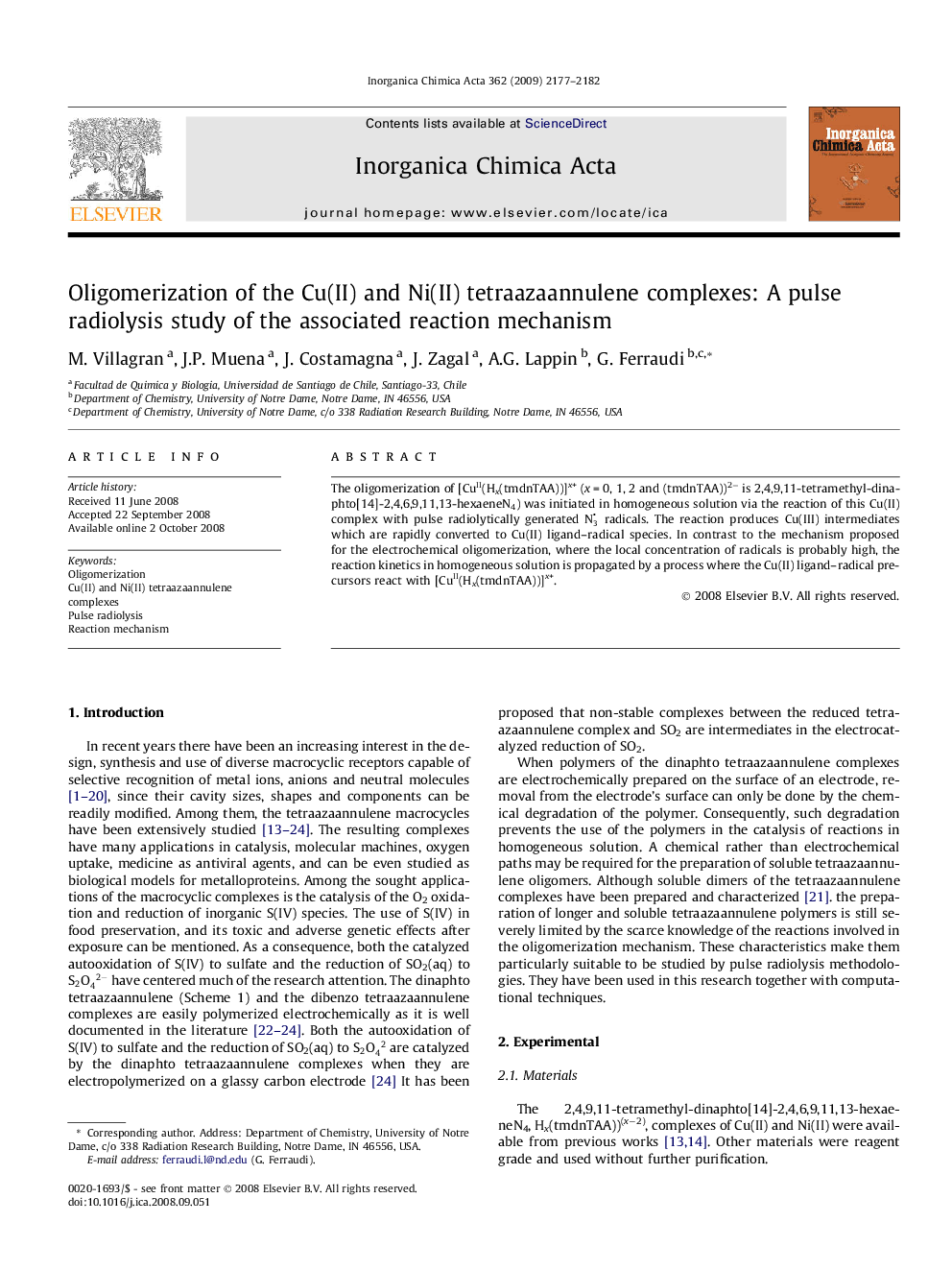| کد مقاله | کد نشریه | سال انتشار | مقاله انگلیسی | نسخه تمام متن |
|---|---|---|---|---|
| 1309837 | 975223 | 2009 | 6 صفحه PDF | دانلود رایگان |

The oligomerization of [CuII(Hx(tmdnTAA))]x+ (x = 0, 1, 2 and (tmdnTAA))2− is 2,4,9,11-tetramethyl-dinaphto[14]-2,4,6,9,11,13-hexaeneN4) was initiated in homogeneous solution via the reaction of this Cu(II) complex with pulse radiolytically generated N3 radicals. The reaction produces Cu(III) intermediates which are rapidly converted to Cu(II) ligand–radical species. In contrast to the mechanism proposed for the electrochemical oligomerization, where the local concentration of radicals is probably high, the reaction kinetics in homogeneous solution is propagated by a process where the Cu(II) ligand–radical precursors react with [CuII(Hx(tmdnTAA))]x+.
The oligomerization of [CuII(Hx(tmdnTAA))]x+ (x = 0, 1, 2 and (tmdnTAA))2− is 2,4,9,11-tetramethyl-dinaphto[14]-2,4,6,9,11,13-hexaeneN4) was initiated in homogeneous solution via the reaction of this Cu(II) complex with pulse radiolytically generated N3 radicals. The reaction produces Cu(III) intermediates which are rapidly converted to Cu(II) ligand–radical species.Figure optionsDownload as PowerPoint slide
Journal: Inorganica Chimica Acta - Volume 362, Issue 7, 15 May 2009, Pages 2177–2182